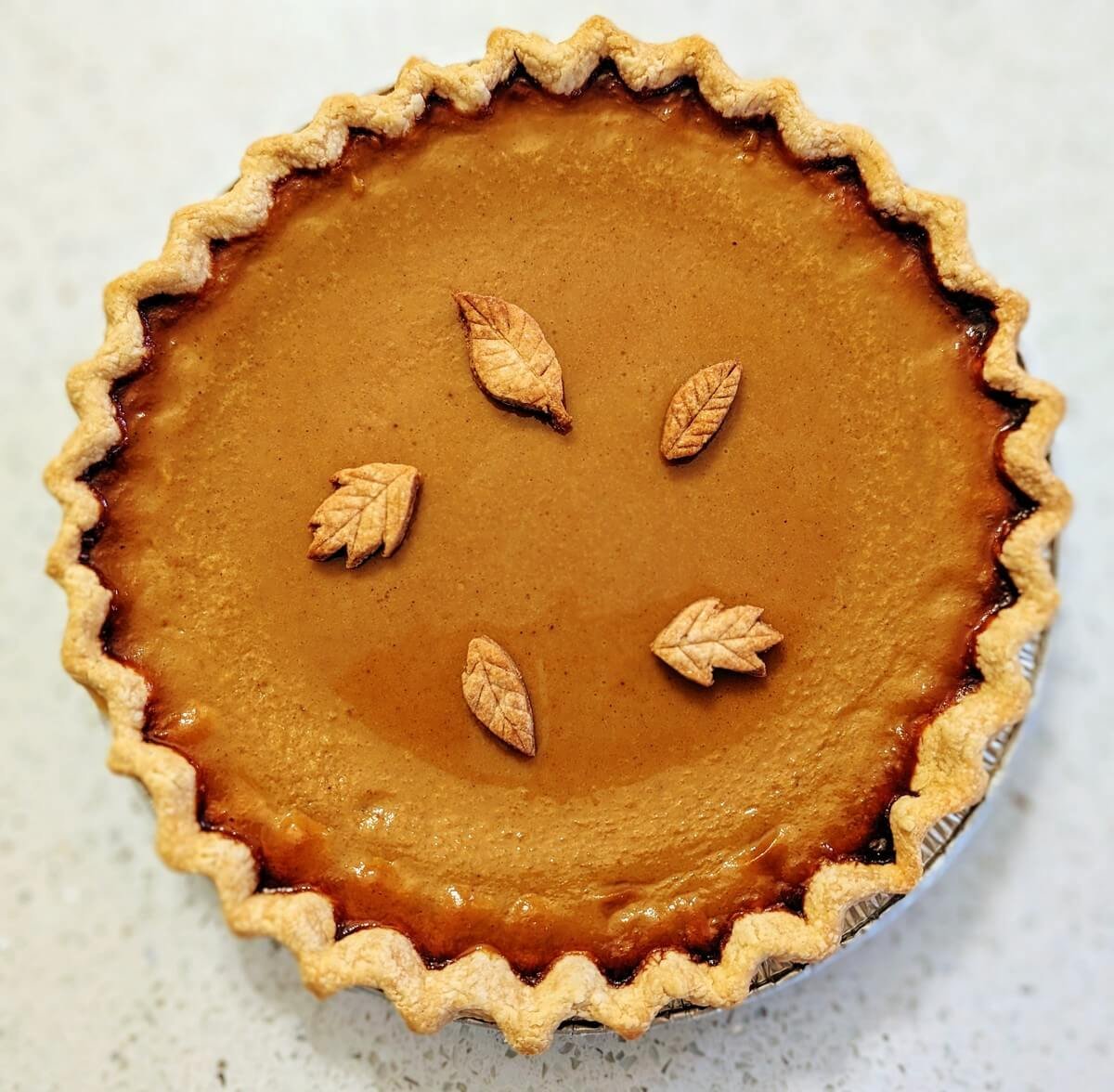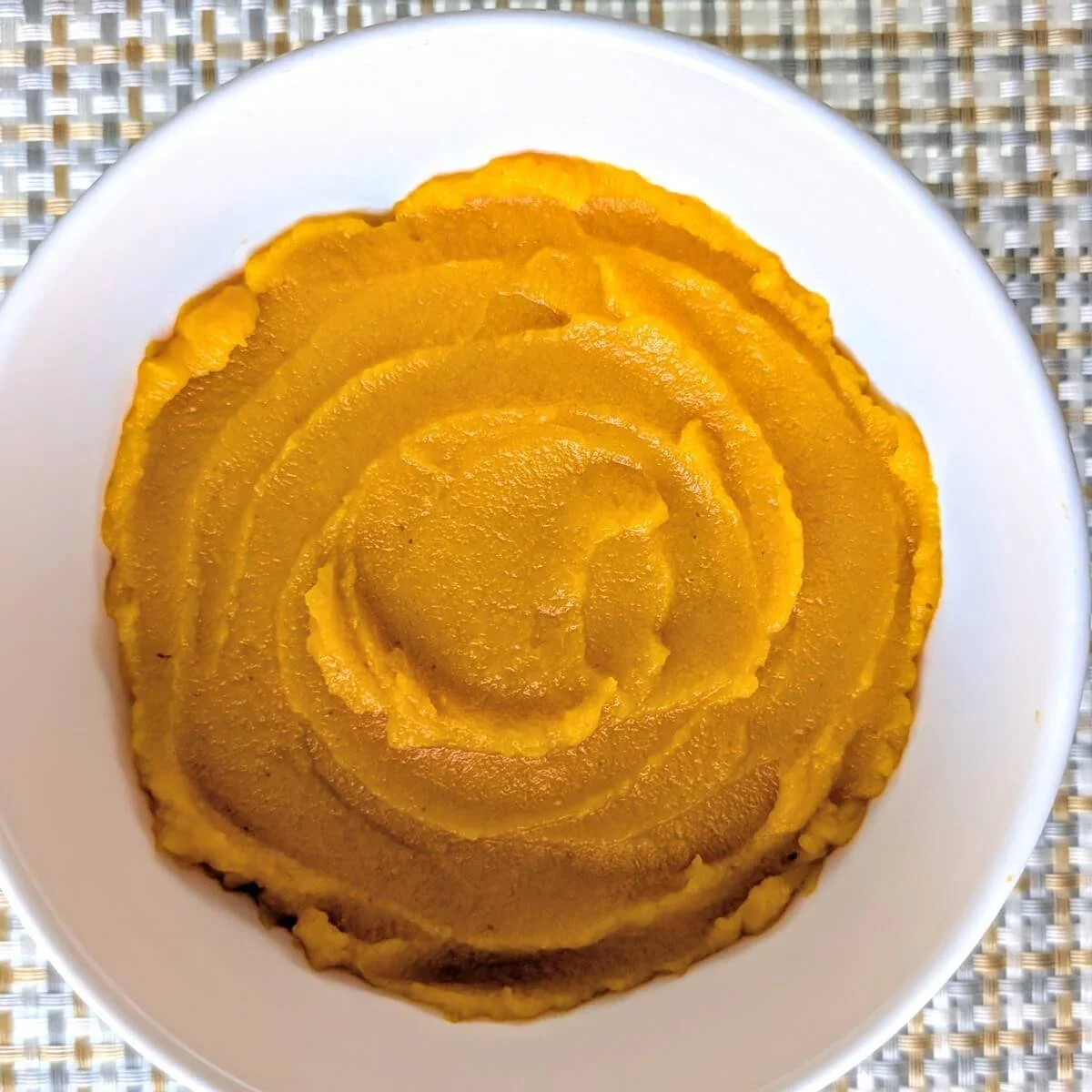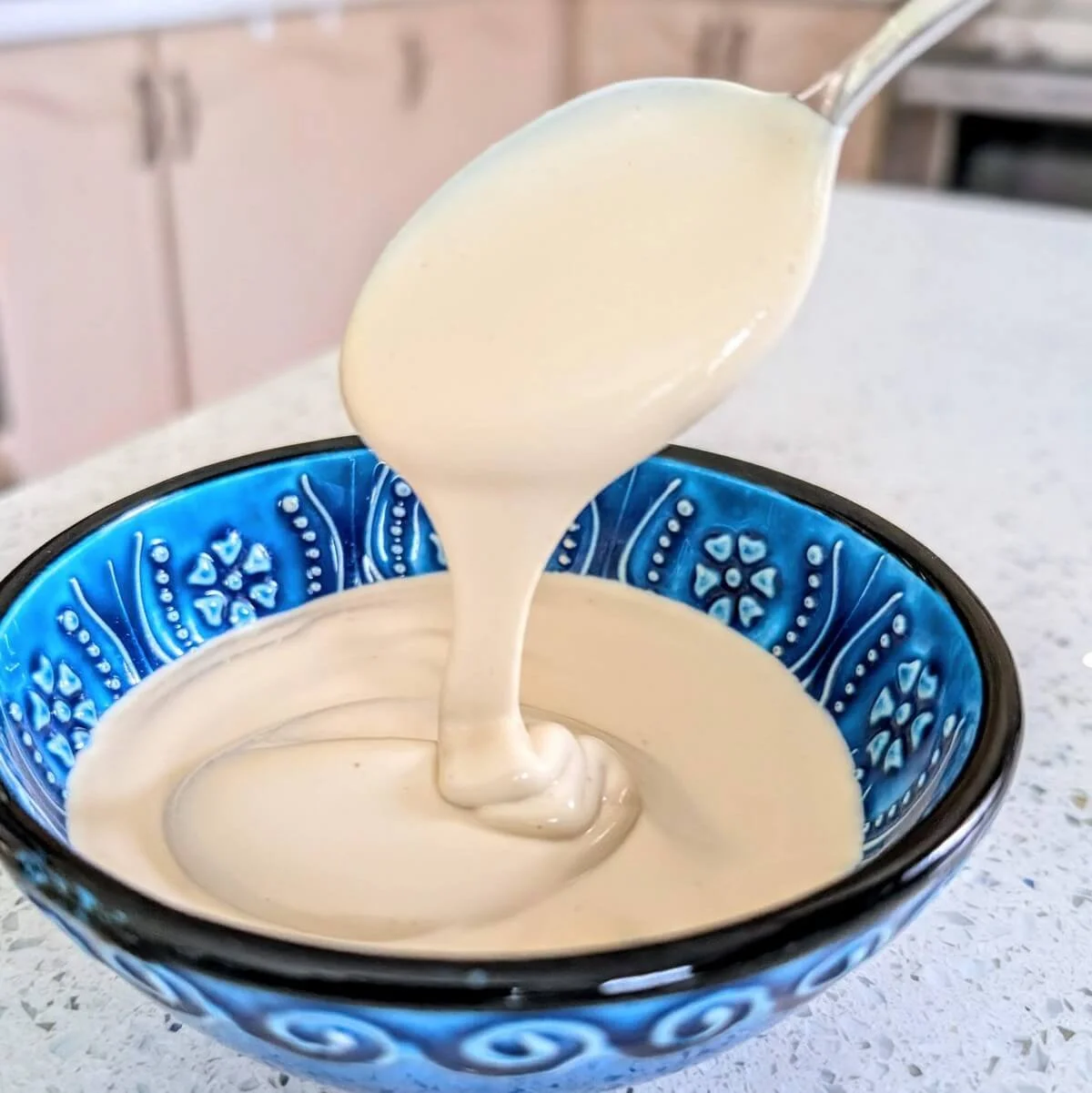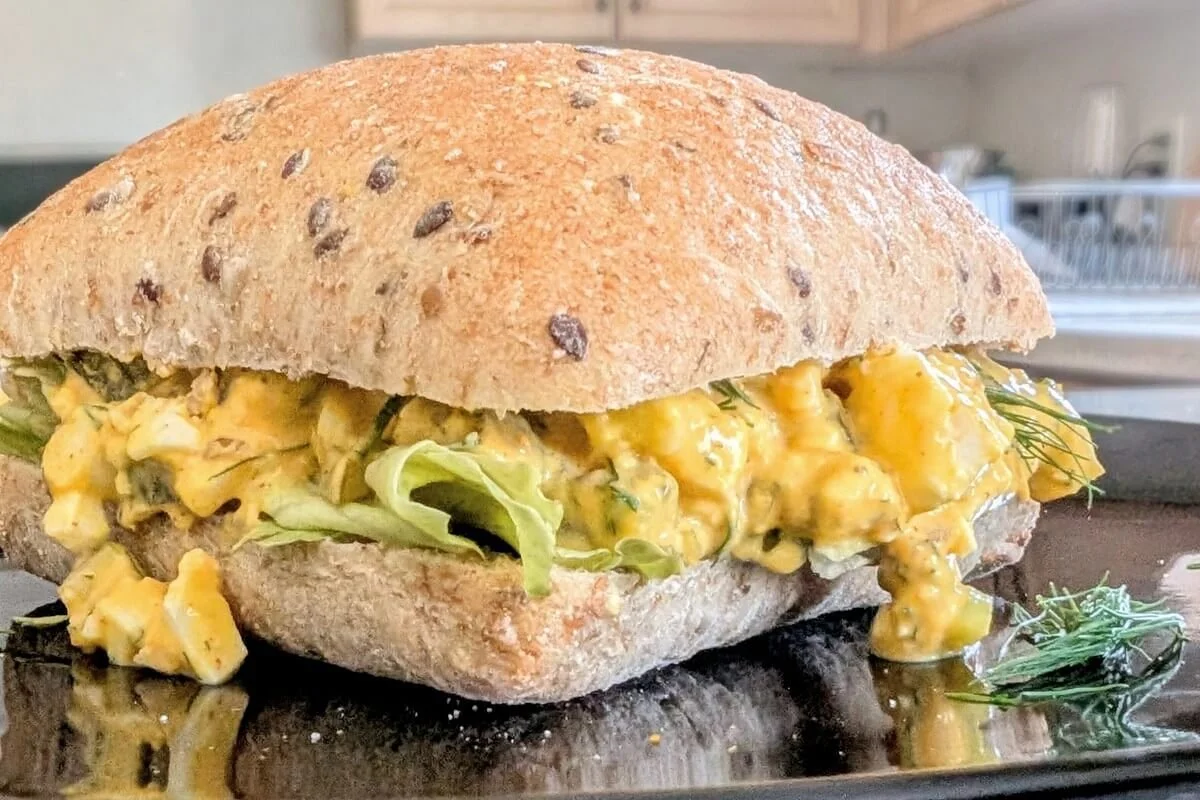How to Make Pumpkin Puree for Pie
Learn how to make fresh pumpkin puree from scratch—easy, smooth, and ready for all your pie and holiday recipes.
The Easiest Homemade Pumpkin Puree
Making pumpkin puree from scratch is simpler than you’d think—and far more flavorful than anything from a can. With just one ingredient and a few easy steps, you’ll have a rich, smooth puree that makes the best homemade pumpkin pie and a kitchen filled with the warmest fall aroma.
After roasting hundreds of pumpkins in restaurant kitchens, I’ve learned exactly what works. From choosing the right pumpkin to cutting it safely and roasting it until caramelized, I’ll walk you through how to make pumpkin puree that’s subtly sweet and never watery.
This method is all about ease and deep flavor. Roasting the pumpkins uncovered concentrates their natural sweetness and evaporates extra moisture—no cheesecloth, no straining. The result? Thick, scoopable puree that’s perfect for all your cozy fall recipes.
Ready to make the best homemade pumpkin puree? Let’s get roasting!
What You’ll Need for This Pumpkin Puree Recipe
Pumpkin Puree Ingredients
2 pie pumpkins (also called sugar pumpkins), about 4 pounds total
Equipment for Homemade Pumpkin Puree
Large, sturdy knife & cutting board
Spoon for scooping seeds
Sheet tray and parchment paper
400°F oven
Food processor
Makes: about 4 cups pumpkin puree
Prep: 5 min Cook: 45 min
How to Make Pumpkin Puree
Step-by-Step with Photos
Step 1: Slice the tops off the pumpkins
Preheat your oven to 400°F.
Rinse your pie pumpkins to remove any dirt.
Place one on its side on a cutting board.
Hold it steady with one hand, and with the other, use a large, sharp knife—like a chef’s knife or serrated bread knife—to carefully slice off the top. Rock the knife gently back and forth if needed, and take your time to avoid slips.
💡Pro Tip: For added safety, place a damp towel under the pumpkin to keep it from sliding while you cut.
Step 2: Cut the pumpkins in half
Stand the pumpkin upright on its base.
Using a large, sturdy knife, carefully slice straight down through the center from top to bottom.
If the pumpkin is tough, rock the knife gently back and forth to help it along. Take your time and keep your hands steady—cutting through raw pumpkin can take a little effort.
Step 3: Scoop out the pumpkin seeds
Use a large spoon to scoop the seeds and stringy pulp from each pumpkin half into a bowl.
Scrape along the walls to remove most of the fibers, but don’t worry about getting every last bit—just make sure all the seeds are out.
You can save the seeds for roasting later.
Step 4: Roast the pumpkins until fork-tender
Place the cleaned pumpkin halves, cut-side down, on a parchment-lined baking sheet.
Roast in the preheated 400°F oven for about 30–45 minutes, or until a fork slides in with no resistance.
As they cook, their juices will puddle and caramelize—this adds flavor, so don’t worry if the edges brown slightly.
Once roasted, take the tray out of the oven and flip the pumpkins cut-side up to help them cool more quickly before blending.
Step 5: Make the pumpkin puree
Once the pumpkins are cool enough to handle, scoop the soft roasted flesh away from the skins. Don’t skip the deeply caramelized bits—they add rich flavor—but avoid any tough or burnt pieces.
Transfer the pumpkin flesh into a food processor, working in batches.
Process the roasted pumpkin until smooth, stopping to scrape down the sides as needed.
Once smooth, transfer your homemade pumpkin puree to containers and repeat with the rest.
Your pumpkin puree is now ready to use in recipes or store for later!
How to Store Homemade Pumpkin Puree
Fridge: Keep your pumpkin puree in an airtight container in the refrigerator for up to 5 days. Let it cool fully before sealing to keep condensation out.
Freezer: Freeze pumpkin puree in labeled, freezer-safe containers or zip-top bags for up to 3 months.
If you're planning to make pumpkin pie later, measure out 1½-cup portions (or whatever your recipe calls for) before freezing. That way, you’ll have the perfect amount ready to go—no need to thaw a whole batch just to use part of it.
To defrost: Thaw frozen pumpkin puree overnight in the fridge, or place the sealed container or bag in a bowl of water to speed things up.
Make ahead: Homemade pumpkin puree freezes beautifully. Roast and puree pumpkins while they’re in season, then freeze measured portions for holiday baking—like Thanksgiving or Christmas—so you can enjoy fresh pumpkin flavor even after the season ends.
How to Choose the Best Pumpkin for Puree
Go for sugar or pie pumpkins: These small, round pumpkins (often labeled “sugar pumpkins” or “pie pumpkins”) have dense, sweet flesh and less water, making them ideal for roasting and pureeing.
Avoid carving pumpkins: Large Halloween pumpkins are bred for size, not flavor. Their flesh is often watery and stringy, which makes them a poor choice for homemade pumpkin puree.
Each pound = about 1 cup of puree: As a rule of thumb, one pound of raw pumpkin yields about one cup of puree. Two 2-pound sugar pumpkins will give you roughly 4 cups—plenty for two pumpkin pies.
Choose firm, blemish-free pumpkins: Look for pumpkins that feel heavy for their size with no soft spots, cracks, or mold. A firm, matte skin is a sign of a fresh and flavorful pumpkin.
Ways to Use Homemade Pumpkin Puree
Fall desserts and pies: Pumpkin puree is a must-have for fall baking. Use it in classics like my pumpkin pie recipe, or try it in tarts, cheesecakes, or even a pumpkin trifle.
Baked goods and breakfasts: Add pumpkin to muffins, chocolate chunk cookies, quick breads, yogurt bowls, pancakes, French toast, or oatmeal. It brings moisture, natural sweetness, and that unmistakable cozy fall flavor.
Soups and savory dishes: Stir it into a homemade béchamel sauce for mac and cheese, whisk it into a squash soup, or use it to add body to hearty stews. It goes especially well with other fall ingredients like sage, turkey, sausage, and brown butter.
Drinks and lattes: Add it to a pumpkin spice latte, hot chocolate, or aged eggnog. You can even blend it into smoothies with cinnamon, nutmeg, and maple syrup for a seasonal twist.
Spreads and dips: Puree it with herbs, feta, or tahini to make a savory dip or spread—it’s a great way to add fall flavor to snack boards or sandwiches.
Homemade Pumpkin Puree FAQs
Can I use big Halloween pumpkins to make puree?
Yes, you can use Halloween pumpkins for puree, but the texture and flavor won’t be as good as pie or sugar pumpkins. Carving pumpkins tend to be watery and stringy, so if you use them, roast them a bit longer to reduce moisture. For extra flavor and caramelization, sprinkle a little sugar and a pinch of cinnamon or nutmeg on the cut sides before roasting.
Can I make pumpkin puree without a food processor?
Yes, you can make homemade pumpkin puree without a food processor—it’ll just have a slightly chunkier texture. Mash it by hand with a potato masher, run it through a food mill, or push it through a colander. If you’re making pumpkin pie, blend the mashed pumpkin with the wet ingredients in a blender or with an immersion blender for a silky-smooth filling.
Do I need to drain or squeeze water out of my pumpkin puree?
No, you don’t need to drain pumpkin puree if you roasted the pumpkin as directed, since roasting naturally evaporates excess water. If your puree still seems thin, you can simmer it briefly on the stove or let it drain overnight in a cheesecloth-lined strainer in the fridge.
Why is my pumpkin puree pale or stringy?
If your pumpkin puree looks pale, it’s usually because the pumpkin variety is lighter or didn’t caramelize as much while roasting. A stringy texture often means the pumpkin wasn’t cooked long enough—just roast it a little longer until completely fork-tender next time.
Can I use other squash instead of pumpkin for pie?
Yes, you can use squash varieties like butternut, kabocha, or honeynut instead of pumpkin for pie. They’re all naturally sweet, giving you the same rich, velvety texture in your homemade pie filling. I’ve even used sweet potatoes before, and once the pumpkin pie spices were added, you could barely tell the difference.
Can I roast pumpkin seeds from my pie pumpkins?
Yes, you can roast pumpkin seeds from your pie pumpkins for a crunchy, no-waste snack. Rinse and dry the seeds, toss with a little oil, salt, and spices, then roast at 325°F until golden and crisp.
That’s it—enjoy your fresh pumpkin puree!
I first learned how easy homemade pumpkin puree is to make back in my restaurant days. Each fall, we’d get cases of pumpkins and turn them into everything—pumpkin pies, soups, muffins, pumpkin spice latte syrup, and more.
Now, it’s a fall tradition in my own kitchen, too. This simple one-ingredient recipe is the base for my homemade pumpkin pie, which I make every holiday season. It’s spiced just right, not too sweet, and always a family favorite. Once you try it with fresh pumpkin puree, you might never go back to canned!
Pin This Pumpkin Puree Recipe for Later!
Did you try this easy pumpkin puree recipe?
I’d love to hear how it turned out or if you have any questions! Leave a comment below, and tag me on Instagram @onecreativecook if you share your creation.
More Cooking Guides You’ll Love
Brown butter basics: Master this simple chef trick for nutty, caramel-rich butter that transforms baked goods, sauces, and even vegetables.
The best way to preserve lemons: Learn how to make preserved lemons at home—the easiest way to add bright, salty-citrus flavor to dressings, marinades, and roasted veggies.
Homemade stock from kitchen scraps: Turn leftover veggie peels, herbs, and bones into rich, flavorful stock—no store-bought cartons needed.
How to boil eggs in a kettle: My easy, mess-free method for boiling eggs gives you perfectly soft or hard-cooked results every time.
How to make perfect couscous: Make light, fluffy couscous anywhere with this clever pour-over method—ideal for travel, camping, or small kitchens.





















































